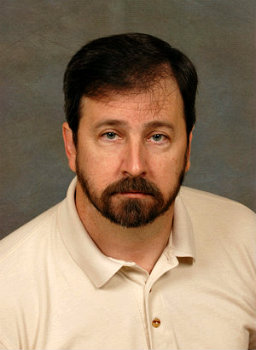Blaming the victims of Big Wind (Curt Devlin)
Jan 23, 2013

—Curt Devlin, Guest Editor, WTS.com
During my years at Boston College, I had the good fortune to study with Dr. William Ryan, then Professor of Social Psychology and author of a the acclaimed book, “Blaming the Victim.” At the time of its writing, Dr. Ryan focused attention on pressing social issues of the day, such as poverty and racism.
He contended, for example, that we blame the poor for poverty and that we blame minorities for their own disfranchisement. We fault victims for somehow inviting the social inequities they endure. In effect, we hide behind an ideological façade rather than face our responsibilities to redress these injustices.
Lately, I have been struck by how Dr. Ryan’s description of this phenomenon applies to the victims of Big Wind—to those who have become ill or were forced to flee their homes to escape the toxic effects of industrial wind turbines sited in close proximity to them.
Just as we blame the poor for their poverty, we seem compelled to blame the victims of Big Wind for their own illness. Apostles of the wind industry, like Dr. Dora Mills, Dr. Robert McCunney and Australia’s Professor Simon Chapman, are only too happy to furnish the tacit explanations needed to justify blaming these victims for their own plight. These typically include psychosomatic causes, hypochondria, delusions, and other forms of mental illness. Interestingly, these “diagnoses” are always arrived at without benefit of examining a single patient, conducting an independent study, or even speaking with those suffering adverse health effects.
It is guilt is by reason of insanity. In this inverted logic, the victims are to blame, not the turbines.
In some cases, we are told the illness associated with these toxic monsters is actually caused merely by the negative perceptions created when someone is ill-disposed to renewable energy—as though anyone could be against such an idea in principle. This is the always-handy nocebo effect.
The justification for blame is particularly absurd and reprehensible because it flies in the face of a simple fact. Most of the people who become ill were actually in favor of wind energy; that is, until they gained firsthand experience of turbines spinning near their homes.
Why are so many ready to blame the victims of wind? Why so willing to receive these explanations without skepticism, without demanding the same scientific rigor demanded of wind critics? Dr. Ryan’s work is especially useful on this question. The answer is simple; it is a convenient form of social denial. People prefer blaming victims over taking responsibility for confronting the real issue. It is much easier, for example, to blame someone in poverty for laziness, than to accept responsibility to find the true causes of economic inequities, much less take action to correct them.
This pitfall is easier to fall into than one might think. It is easy to believe that if we feed the hungry, we risk rewarding them for being hungry. It’s much harder to make sure they find ways to help them feed themselves. Accepting personal or social responsibility requires change, action, or personal sacrifice to effect positive change or prevent harm. It forces people to confront the contradictions and absurdities in their dogmas and replace them with facts, to reject social delusions and face inconvenient truths.
In short, it is much, much easier to blame the victims—than ourselves.
The overwhelming body of medical and scientific evidence demonstrates that infrasound, low frequency noise, and vibration of the kind produced by industrial wind turbines cause serious adverse health effects. The evidence has mounted steadily for more than 30 years. It shows compellingly that the symptoms and illnesses called Wind Turbine Syndrome and Vibro-Acoustic Disease are caused by exposure to this toxic form of sound energy. Despite the vocal denials of the wind industry, there are no independent studies of merit to contradict this finding. There are only the groundless, though profuse, assertions and rhetoric of the windy industry assuring us that their denial of the real dangers is well founded.
There is also incontrovertible evidence that industrial wind turbines produce excessive quantities of this dangerous form of sound and vibration. Recently, the wind industry itself is being forced to gradually admit this fact. But even if the underlying causal connection were a complete mystery, the simple empirical evidence that many, many people become ill when they are near turbines is undeniable to anyone with eyes, ears, or one iota of common sense. Of equal importance, the same people who become ill near turbines, feel better when they get away from them. This simple form of evidence, referred to as case-crossover data by epidemiologists, matches common sense. It furnishes irrefutable proof that, in fact, the turbines are to blame, not the victims.
Wind turbines cannot eliminate our dependency on fossil fuels. They will not reduce the emissions of greenhouse gases, nor save us from climate change. Wind turbines are not safe, they are not clean, and they have proven to be economically unsustainable—time and time again. Wind power will not prevent irreparable harms to people as well as the environment caused by our own insatiable appetite for energy. Wind cannot alleviate our obligation to one another to use energy wisely and conservatively.
There is virtually no benefit to justify the harm caused to victims. Even if such benefits existed, they could hardly outweigh the harm being done to people. If we continue blaming the victims and denying this truth, we will soon become victims of our own devices. This ironic little reversal of fate is what Hegel referred to as dialectic, and it is inevitable. We will become the victims of our own blindness and we will be blamed for it—though perhaps only by history.
This last thought is cold comfort to those who must face the steady erosion of their health, their families’ and financial reserves, and the destruction of their very livelihoods that is created by living too close to turbines. The victims of Big Wind are like so many canaries in the mine shaft, who flee or fall in the face of this industrial toxin. Those who blame them are like unwitting miners who stand staring dumbfounded at the obvious, wondering what these canaries have done to bring this catastrophe upon themselves—and then continue along their merry way down the mine shaft, oblivious to the clear and present danger as though they are immune to it. Until it is too late.


Comment by Marsh Rosenthall on 01/23/2013 at 9:57 pm
Ah, Curt, how well you make the case. But perhaps you misapprehend the serious reason that the coal miners of old brought the canaries down into the mines with them. The canaries were the only warning system they had for the presence of deadly methane gas. They always kept one eye on the birds. If one fell off its perch, it was was time to get out, and fast.
Today’s society does not have canaries to warn them about its toxic errors. It believes in the siren song of the “green” pontiffs that have lulled them into a warm and fuzzy feeling about saving the planet from their very lifestyle that threatens nature itself.
That’s a huge burden of guilt. Why not lay it on some of the most vulnerable? After all, they can easily be dismissed as cranks, NIMBYs. They don’t realize that the new N-word really means “Next Time it Might Be You”.
How much more must citizen human rights be perverted before the world wakes up?
Marsh
Comment by sue Hobart on 01/23/2013 at 10:02 pm
God bless you, Curt! Another straight up truth!
We do have the truth on our side. The only question is will it matter in the end?
Thank you for who you are, for the fight, and how you say it. I take comfort knowing we have you in our corner!
Comment by DBroniek on 01/24/2013 at 9:05 am
Very well said. Thanks for stating some plain truth and making us “receptors” feel validated.
Editor’s note: The wind industry no longer refers to people within a “windfarm” as “people” or “human beings.” People are now referred to as “receptors,” and each “receptor” is given a number. Such as, Receptor 15. My name is Calvin Martin, but, if I live within a windfarm, I would be Receptor 15—or whatever number I got assigned.
Kind of like Hitler’s extermination camps, where human beings were stamped with a number. This man, below, was named Leon Greenman. But to the death-camp staff at Auschwitz, he was #98288.
How short a step is it from Receptor #98288 to Auschwitz #98288, I wonder?
Comment by mark duchamp on 01/24/2013 at 6:33 pm
Curt, you are so right in your prediction! Humanity is laying the very traps into which it will fall. How many more people will have to become victims of windfarms before Joe Public realizes he is next on the list?
Living in a city is no more than a temporary protection against Wind Turbine Syndrome. Every urbanite has, or dreams of having, a second home in the countryside. And most pensioners buy a house as far away from cities as possible. This is when the Greenpeace fan urbanite of today will wish he had thought twice about turbine victims.
Mark